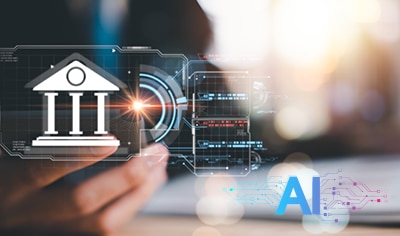A new wave of Generative Artificial Intelligence (AI) has ushered in a new era of content creation since the release of ChatGPT, Bard, Midjourney, Claude, DALL·E 2, and other content-creating tools. The excitement is centered around the latest Generative AI applications that are poised to transform how work gets done and have immense potential to revolutionize businesses across industries. In fact, the excitement is well-deserved since the latest research report by McKinsey estimates that Generative AI can add 2.6 trillion USD to 4.4 trillion USD in value annually.

CTOs, CIOs, and Decision-makers can play an instrumental role in capturing that value but it’s worth noting that Generative AI is at a tipping point, and the speed at which this transformative technology is developing presents a new world of possibilities for generating seemingly new, realistic content such as text, imagery, audio, videos, code, and 3D models from the training data using algorithms. In other words, Generative AI is a suite of algorithms built on top of foundation models that are trained on large volumes of unstructured or unlabeled data in a range of formats. Foundation models leverage deep learning and contain extensive neural networks that are trained to perform a wide range of tasks, whereas, traditional AI models could perform just one task at a time. For instance, one foundation model can prepare a brief synopsis for a 5000-word technical report on reducing technical debt, devise a go-to-market strategy for startups, and create a first draft of a sales pitch – all of this within a few seconds. In simple words, recent advancements in the field of Generative AI introduced novel use cases that previously had not existed. Let’s look at some of them.
Popular Use Cases of Generative AI
1. Image Generation
With the help of generative AI, users can transform text into visually-rich images. Based on the prompt given by users, an image generator can produce realistic images within a few seconds that can be used for various commercial purposes, including marketing, advertisement, education, media, design, and more. This is beneficial for graphic designers since generative AI empowers them to create any sort of image tailored to their requirements. Besides this, the image generator can produce a realistic version of an image based on a sketch or semantic image. This use case of Generative AI can be proven beneficial to the healthcare sector since it improves the diagnosis process.
What’s more interesting about the image generator is that it facilitates image-to-image conversion, enabling users to change the external elements of an image whilst keeping its constitutive elements intact. Converting a young man’s image to an old one is one such popular example of such a conversion.
2. Text Generation
Generative Artificial Intelligence (AI) is becoming increasingly popular among businesses of all sizes since it allows them to automate content creation and save a significant amount of time and resources. The use of generative AI involves algorithms to produce text that closely resembles human-written content. This may be the reason behind the surging popularity of text-generative AI platforms such as ChatGPT, which reached more than 100 million users in merely two months, taking OpenAI’s valuation to 29 billion USD. Such platforms are helpful in generating articles or blog posts, product descriptions, ad copies, social media posts, website content, dialogues, translating languages, summarizing text, and more. Besides generating content, these platforms can be used for live chat windows to engage customers with real-time conversations.
The important thing to note here is that these text-generation AI platforms leverage the Natural Language Processing (NLP) technique of AI to quickly read a prompt, understand the context and intent behind the query, and produce meaningful responses to the users. Such AI platforms are trained on large data sets to create relevant and intelligent responses.
The AI Revolution Across Industries
3. Code Generation
Another use case of Generative AI is in the realm of software development. Given its ability to automatically produce code without the need for manual input, Generative AI empowers both seasoned and citizen developers to expedite the software development process. Besides code generation, Generative AI can also be used for creating test cases to assess the functionality of software and automating bug fixing. Furthermore, Generative AI facilitates developers to quickly implement Machine Learning models in their software.
4. Music Generation
Producing unique and royalty-free musical content has become a breeze with the advent of Generative AI. Using Generative AI tools and applications, users can create original musical materials for commercial purposes and other creative endeavors.
How AI Can Help Businesses Take CX to the Next Level
5. Video Generation
Similar to music generation, Generative AI tools and applications can be used for producing high-quality video content, ranging from shorts and reels to full-length videos. The best part of using Generative AI applications is that they allow users to automate a range of tedious tasks such as adding animation or special effects, video composing, etc.
Summing Up
Generative AI has brought a paradigm shift in the realm of Artificial Intelligence. Today, this transformative technology stands at the forefront of innovation and promises unparalleled creativity, productivity, efficiency, and cost savings. Embracing Generative AI unlocks a world of possibilities for businesses, enabling them to stay competitive in the fast-changing business landscape. Harness the limitless potential of Generative AI by building predictive models that allow you to innovate faster and create content in ways that were once unimaginable. Get in touch with a reliable tech partner for crafting predictive AI models that help you transcend the boundaries of traditional content development and seize the opportunity that Generative AI offers.





